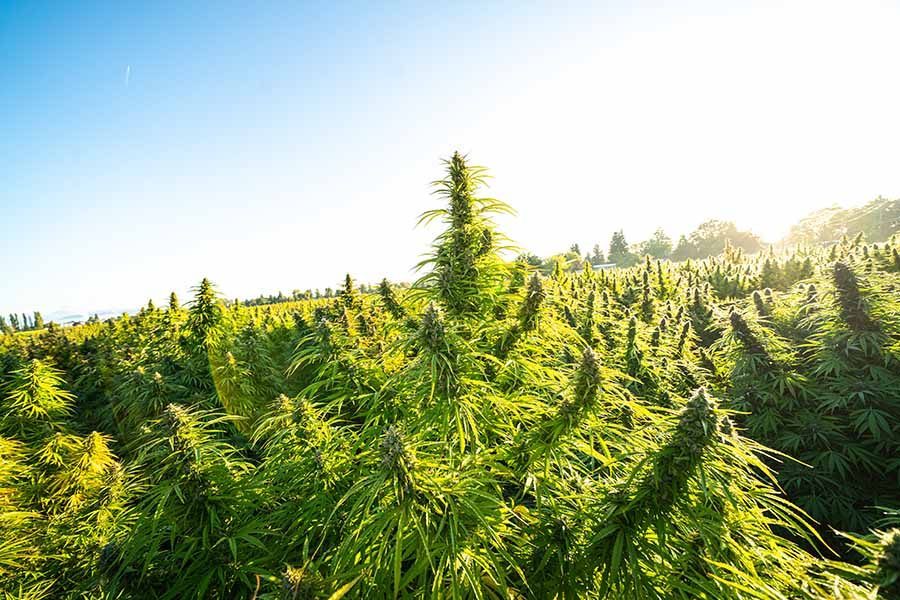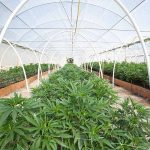How to Deal With Common Plant Pathogens: Mold, Spider Mites, and Mildew
Cultivating a garden can be incredibly satisfying, but it takes a lot of work to grow healthy, productive plants. Much of the sweat equity associated with gardening gets put in at the beginning of the season as people prepare the soil, remove unwanted plants, and learn how to provide their beloved flowers, vegetables, or hemp with everything they need to thrive.
Unfortunately, all that hard work can wind up going to waste if it’s an especially bad year for plant diseases. There are many plant diseases, infectious bacteria, fungal disease, and viruses that can affect susceptible plants, and the number of know viral diseases is increasing all the time [1]. It would take a lifetime of study to learn about even the most common plant diseases that affects plant growth cycles or crop yields, so this article will focus on how to manage plant diseases of three common types: mold, spider mites, and mildew. Knowing what to look for in these three is crucial for disease control and to save infected plants.
Managing plant diseases can be easy once you know when and what to look for on infected plants. Diseased plants can sometimes be remediated back to full health, but disease development and disease management are key to knowing when the line has been crossed, and when plant injury has gone too far. How to look for bacterial disease and bacterial pathogens are critical to understanding and controlling plant diseases and plant disease prevention.
Sooty and Snow Mold
Mold plays an essential role in the ecosystem by facilitating biodegradation to enable rot and decay [2]. Unfortunately, some types of mold can also spread to otherwise healthy, living plants. The two most common culprits are sooty mold and snow mold, both of which can impact a wide range of species. A susceptible host plant that takes on mold can come have infested soil and many plants in the same area can become host plants, leading to massive plant death.
These two types of fungal pathogens can be a huge problem for cannabis growers, in particular. Many gardeners start out thinking they’d like to grow hemp for personal use, then wind up opting for more mold-resistant garden plants and buy high CBD, low THC cannabis instead. Disease resistant cultivars of the same species play a huge role in shortening a disease cycle. Proper plant selection can cut out the risk of stressed plants, stunted root growth, bacterial diseases, and infected plant parts. High CBD, low THC cannabis are among the least affected plants and are often planted near other plants because they are so good at preventing plant diseases from spreading.
That’s a perfectly fine solution, but not for those who are determined to make backyard hemp growing work for them. These folks may need to use different potting soil, conduct a soil test, and constantly look for fungal organisms to control measures of fungal infections.
Sooty Mold
Sooty mold, also referred to as gray mold, is a fungus that grows on honeydew, a sticky deposit left by certain types of plant-sucking garden pests. It forms primarily on plant tissues and on the plant surface of leaves, impeding photosynthesis and stunting plant growth, often causing heavily affected leaves to drop off completely. It can also affect certain types of produce, starting out as spots and eventually turning the whole fruits or flowers to rot on the stems.
Dealing with sooty mold
Dealing with sooty mold requires addressing the underlying problem: the honeydew produced by aphids, mealybugs, leafhoppers, and other plant-sucking insects that can attack healthy plants fast. The best way to deal with these pests is to apply insecticidal soap or organic neem oil. Since ants often domesticate aphids, protecting them from predators to ensure access to their delicious honeydew [3]. It’s also wise to keep ant populations in the garden low by setting traps around the garden.
Snow Mold
Snow mold flourishes in cold, moist conditions, which helps to explain its name. Environmental factors in your garden are the largest factor here. Space plants wide enough apart so they don’t build up too much moisture between each other and allow for beneficial organisms to thrive in soil. These cultural practices are often long forgotten in our high yield, maximize production attitude of farming in western culture.
Moisture acts on grass and other ground cover plants in the winter, leaving them looking wilted and brown come spring. The best way to deal with snow mold is to rake the matted plant matter after the snow melts to break up mold colonies and facilitate new growth. In the fall, cut back perennial plants to stop them from creating a mat beneath the snow.
Spider Mites
Spider mites are garden pests that feed on over 200 different species of plants [4]. Severe infestations can stunt the plants’ growth or even kill them outright, so it’s important to identify spider mite infestations early and deal with them quickly.
Since spider mites are tiny, the easiest way to identify an infestation isn’t to look for the insects themselves. It’s to check the plants often for signs of damage associated with an active infestation. Common signs of spider mite damage include:
- Tiny white or yellow spots on leaves
- Leaves with a mottled or striped appearance
- Plants that look bleached or bronzed
- Leaf drop
- Distorted leaf or flower shapes
- Webbing
- Plant dieback, in extreme cases
Spider mites are most active during drought conditions, and they’re most likely to attack plants that are already stressed. The best way to prevent a spider mite infestation is to keep plants well-watered and check them every three to five days for signs of infestation. If they start taking over, try introducing predatory mites like Phytoseiulus persimilis [5] or the right species of lady beetle to the garden before the infestation gets too bad. If the situation is already out of control, try insecticidal soap or horticultural oil that will kill the spider mites without reducing populations of beneficial insects.
Powdery and Downy Mildew
It’s common to hear people use the term mildew generically to refer to any kind of mold growth, but gardeners know better. Mildew is a certain type of mold with a flat growth habit. There are two types that are notorious for damaging plants: powdery mildew and downy mildew.
Powdery Mildew
Powdery mildew is a scourge to gardeners and farmers across the country. It leaves a white, dusty coating on leaves, stems, and flowers alike and affects everything from hemp to roses and apples to cucumbers. Like most fungi, powdery mildew spreads by fungal spores and it is especially bad in humid environments [6], so the keys to keeping it at bay are to reduce the spread by giving the plants plenty of air circulation and ensuring that the foliage stays dry by watering in the morning instead of at night and ensuring proper drainage. Some gardeners also recommend spraying a baking soda and water solution or, in extreme cases, commercial fungicides for disease management.
Downy Mildew
Downy mildew also thrives in wet conditions, discoloring the upper portions of leaves and creating a spore mat of white or gray mold on their bottoms. Downy mildew affects annuals and perennials, flowers, and food crops alike and unlike powdery mildew, it does not respond to fungicides. The best way to control downy mildew is to remove and destroy infected foliage and to buy resistant cultivars whenever possible. Soil ph may also affect some soil borne fungi and other plant diseases that affect plant tissue like downy mildew.
The Bottom Line
Growing a beautiful flower garden or producing a high yield of hemp or food crops takes a lot of work. While Mother Nature can be kind, offering gardeners much of the light, water, and nutrients their plants need to thrive, she can also be cruel. It’s impossible to prevent every pest or pathogen from entering the garden, but experienced growers know that having early control strategies in place is key. Follow the advice above to reduce the impact of mold, spider mites, and mildew in any garden.
References
- Infections Plant Diseases: Etiology, Current Status, Problems, and Prospects in Plant Protection
- Science Daily: Mold
- Did You Know: Farmer Ants and Their Aphid Herds
- Yard and Garden Insects: Spider Mites
- Cornell University: Predators – Phytoseiulus
- Almanac.com: Powdery Mildew
Frequently Asked Questions
Is It legal To Send CBD In The Mail?
Yes, but even though these products are federally-compliant, individual states may have their own regulations about purchasing or using hemp-based products, and these are subject to change. You should check your state and local rules before ordering. We ship nationwide.
What Does "Hemp-Derived" Mean?
Hemp-derived means made from hemp, sometimes also referred to as industrial hemp. The 2018 Farm Bill (see next section) established new federal legal definitions and rules for hemp, including that hemp and “and any part of that plant, including the seeds thereof and all derivatives, extracts, cannabinoids, isomers, acids, salts, and salts of isomers, whether growing or not, with a delta-9 tetrahydrocannabinol concentration of not more than 0.3 percent on a dry weight basis” may be used for production, sales, transport, and use.
Are Hemp Products Safe?
Yes, hemp and hemp derived products are safe when they are produced with proper and safe practices. Look for a product’s COA. A certificate of analysis (COA) is a document attesting to a product’s laboratory analysis and testing for cannabinoids and adulterants.
What Is A COA?
A certificate of analysis (COA) is a document attesting to a product’s laboratory analysis for cannabinoids and in some cases adulterants, heavy metals and pesticides.It is a useful tool for cannabis producers and customers to ensure quality and trust.





